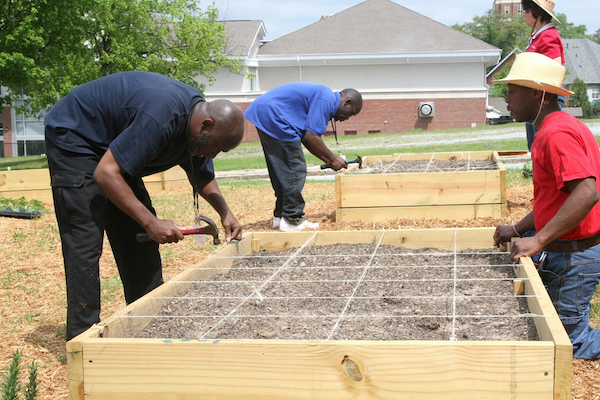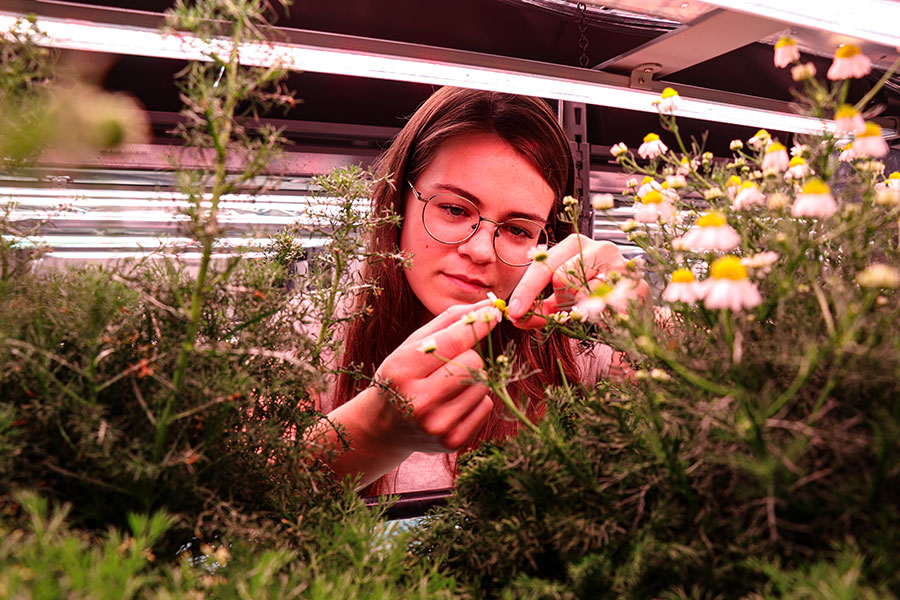Gardens, like gardeners, age and change with time. Unfortunately, the gardener’s ability to perform maintenance and the garden’s demand for it often greatly diverge. Many of the gardeners I meet in my job as a University of Georgia Cooperative Extension agent face challenges keeping things up as they grow older. Many eventually move to a different residence so that they have a smaller area to maintain, leaving behind years of hard work and memories.
Gardening is a beneficial activity, especially for seniors. It’s also an enjoyable form of exercise that helps maintain and build strength and mobility. Recent scientific studies show that even low to moderate levels of gardening help to reduce stress and anxiety levels.
Consider these adjustments to gardening to make it more manageable as the gardener ages.
Stretching before and after gardening can help keep a gardener’s best tool — the body — in working order. After stretching, begin the day with the more physically demanding tasks. Proper posture while bending; lifting with the legs, not with the back; and carrying materials close to the body will decrease the risk of injury. A physician may be able to recommend knee, wrist or elbow braces for troublesome joints.
Adding regular breaks or breaking up more strenuous tasks with lighter ones can keep fatigue and cramps away. I like to make lists of gardening tasks each weekend. I find this helps me stay on task and avoid wasted effort. I get satisfaction when I check things off my list, which keeps me from feeling overwhelmed by everything that seems to need attention.
The right tool for the job can make a noticeable difference in your body and your plants. Make a habit of regularly sharpening pruners and shovels to keep them in top working condition. Sharp pruners are less likely to leave uneven cuts, bruises and tears on plants, which will decrease stress and possible infection.
Make sure to match the size of the tool to the job, but most importantly, to your body. I have a construction-style shovel with a heavy steel handle that I am certain could withstand being run over by a dump truck. It is a great tool for breaking through the heavy clay, but it’s not what I use for lighter, repetitive work, like turning compost or spreading wood chips. A number of tool companies sell ergonomic tools that are designed to work with our bodies and joints in mind. Many tool companies also make tools with longer handles.
Adaptations to existing tools can reduce the amount of strain on your body. Wrists are strongest and under the least amount of strain when they’re in the neutral position, or in line with the forearm with the thumb up. To maintain this position while gardening, add after-market, pistol-grip handles to your hand tools. D-shaped handles can be added to the midpoint of tool handles, like shovels and forks, to make them easier to use. Rubber grips or pipe insulation can be added to handles to make them easier to grip.
The design of a garden or landscape can be improved to increase access and reduce maintenance demands for older gardeners. Wide paths with firm foundations will improve access and reduce potential tripping hazards.
Plant annual flowers and vegetables in containers near the home or use raised garden beds, which are great for all ages, especially aging gardeners who still crave homegrown veggies. Recommended heights for raised beds range from 24 to 30 inches, depending on the gardener’s physical ability.
Proper plant selection can also make the aging process easier for gardeners. Perennials, while much easier to care for than annuals, require a fair amount of seasonal upkeep. Consider replacing them with a flowering shrub, evergreens or ornamental grasses for ease of maintenance. When a replacement option is not obvious, it may be better to simply remove some plants. I have seen many gardens that spill over with plant material. Negative space will make maintenance easier and highlight the remaining plants.








